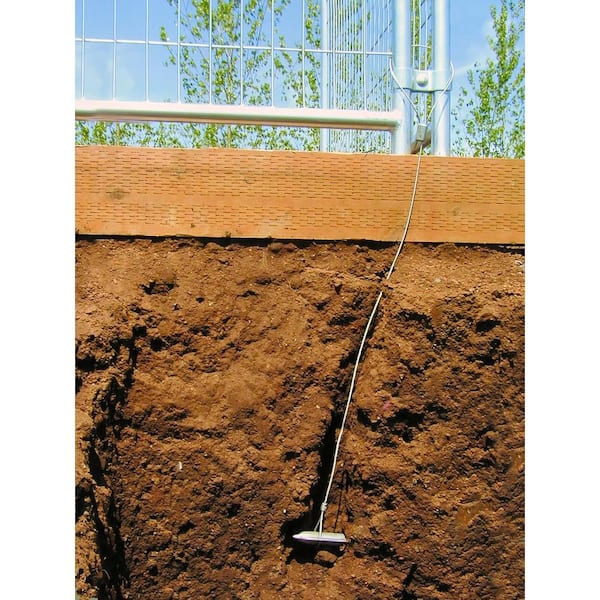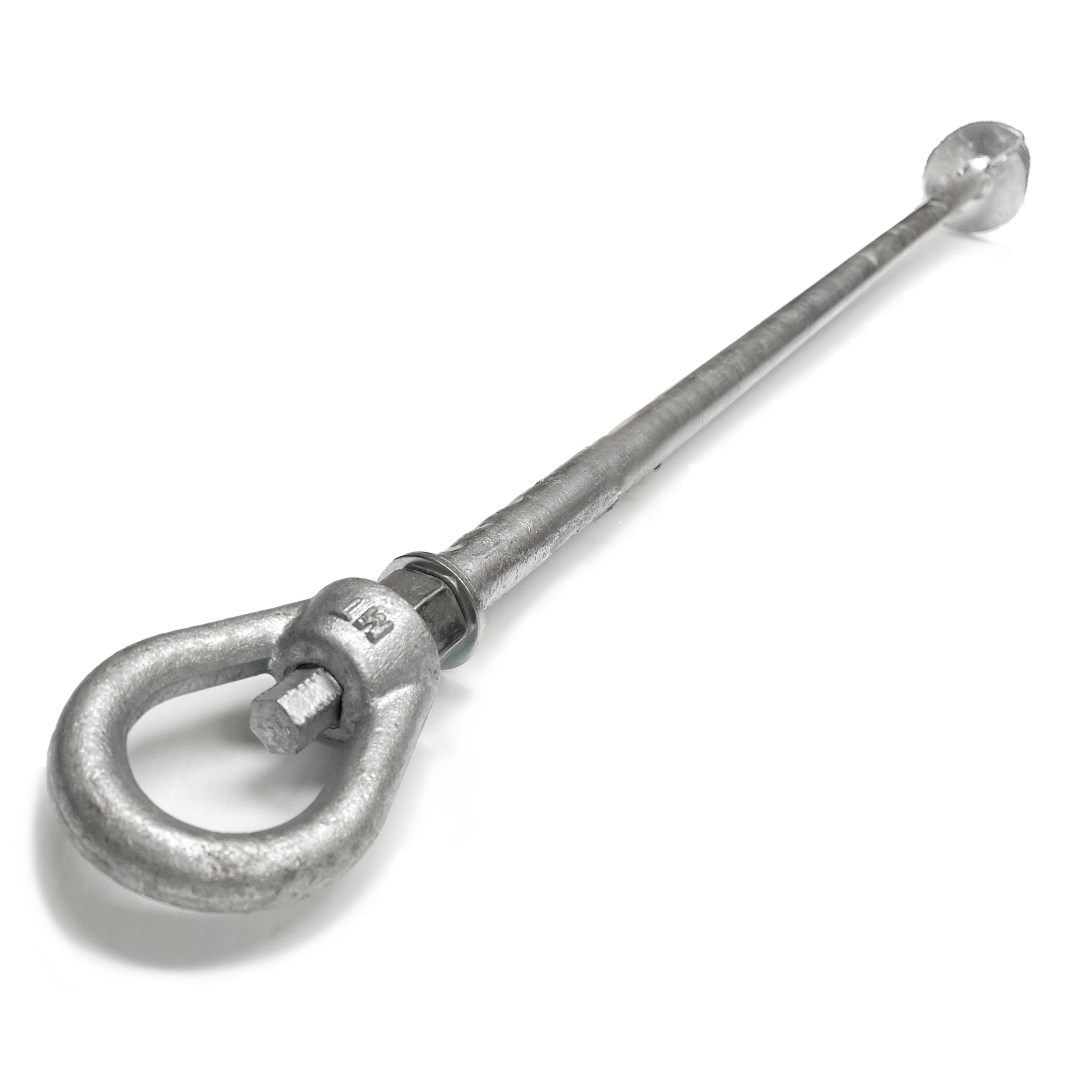Reviewing Various Ground Anchor Models to Discover the Best Option for Your Needs
Reviewing Various Ground Anchor Models to Discover the Best Option for Your Needs
Blog Article
Explore the Different Kinds of Ground Anchor for Your Following Project
From auger anchors, which stand out in varied dirt problems, to stake supports developed for temporary installations, the options are many. In addition, concrete and screw supports present special advantages in specific circumstances, while deadman anchors are tailored for applications needing resistance to lateral forces.

Auger Anchors
Auger supports are a popular selection in numerous construction and landscaping tasks due to their special layout and efficient anchoring capacities. These supports consist of a helical screw-like shaft that is driven right into the ground, enabling for a stable and protected hold. The spiral layout assists in easy setup and optimizes resistance versus lateral forces, making auger anchors especially reliable in applications such as fence, short-term frameworks, and disintegration control.
The setup process of auger anchors is relatively straightforward. Auger supports can be quickly gotten rid of and reused, which includes to their cost-effectiveness and sustainability.
Among the considerable advantages of auger supports is their capability to disperse tons evenly across the bordering soil, lowering the danger of dirt disruption and reducing ecological effect. Additionally, they are less at risk to loosening up or heaving with time contrasted to standard anchoring approaches. Auger anchors are an exceptional selection for jobs calling for resilient and dependable anchoring services.

Risk Anchors
When it concerns securing frameworks in a variety of outdoor applications, risk supports provide a straightforward and dependable service. These anchors are commonly created from resilient materials such as steel or light weight aluminum, made to hold up against ecological anxieties while giving ideal security. Their straightforward design permits fast installment, making them an excellent selection for temporary or permanent anchoring demands.
Risk anchors are specifically useful in protecting outdoors tents, covers, and other lightweight structures against wind and climate. They work by being driven into the ground at an angle, producing a solid hold that resists pull-out forces - Ground Anchor. The effectiveness of risk supports depends upon several factors, including dirt kind, moisture material, and the angle of setup
For added security, numerous risk supports include add-on points for ropes or straps, enabling tension changes as necessary. In applications such as landscaping or building, they can successfully support devices or structures on unequal surface. In general, stake anchors offer a affordable and flexible remedy for protecting various outdoor setups, making them a recommended option for specialists and do it yourself enthusiasts alike.
Concrete Anchors
Concrete anchors provide a durable option for protecting frameworks to concrete surface areas, ensuring stability and safety and security in different applications. These anchors are crucial for projects varying from household buildings to large-scale commercial installments. They can be found in different kinds, including expansion supports, glue supports, and undercut supports, each developed for specific load demands and environmental conditions.
Adhesive anchors use high-strength epoxy or material to bond the support to the concrete, using premium load-bearing capacities, specifically in split concrete situations. Undercut anchors produce an unique shape within the concrete, supplying outstanding holding power, specifically in applications where tensile tons are prevalent.
Selecting the appropriate concrete support involves considering elements such as the weight of check out this site the lots, the condition of the concrete, and ecological problems. Proper setup methods are essential to ensure optimal efficiency and dependability. When executed appropriately, concrete supports considerably enhance the structural stability of different projects, making them crucial in modern construction methods. Comprehending the details demands of your task will certainly assist in selecting the best type of concrete anchor for the task.
Screw Anchors

Screw supports are a flexible fastening remedy that can be efficiently used in a selection of applications where conventional concrete anchors may not be enough. These supports include a helical design that permits them to be conveniently driven right into the ground, making them ideal for use in soil and various other substrates. Their distinct structure supplies exceptional holding power and resistance to pull-out pressures, making them appropriate for various jobs, from landscaping to structural assistance.
Among the key benefits of screw supports is their simplicity of installment. They need minimal equipment and can commonly be mounted without the need for excavation, which saves both time and labor costs. Furthermore, screw anchors can be gotten rid of and recycled, supplying a sustainable solution for temporary applications.
Screw supports are specifically helpful in areas where dirt conditions are challenging, such as loosened or sandy dirts. Their capability to be mounted at varying depths enables for customization based on particular task requirements. Generally, screw supports give a efficient and dependable anchoring technique, making them an excellent selection for service providers and designers seeking effective solutions for their projects.
Deadman Anchors
Deadman supports act as a durable solution for stabilizing frameworks in challenging conditions, particularly where typical securing methods may fail. These supports consist of large, heavy things hidden underground, which create resistance versus lateral forces. The style typically involves a straight component, such as a block of concrete or a steel plate, hidden in the dirt, to which cables or straps are attached.
The effectiveness of deadman anchors hinges on their capability to distribute lots over a larger area, reducing the risk of failure in unsteady dirt conditions. They are especially useful in applications such as retaining walls, momentary structures, and slope stabilization, where soil activity can endanger the honesty of the framework.
Setup of deadman supports needs mindful preparation to ensure they are put at the correct deepness and alignment, optimizing useful reference their load-bearing capability. While they may require more labor and product than lightweight anchors, their dependability in adverse conditions makes them indispensable for long-term projects. Deadman supports are versatile and can be adjusted to numerous applications, making them a go-to choice for engineers facing special obstacles in their tasks.
Verdict
In recap, selecting the proper kind of ground anchor is vital for ensuring security and safety and security in various jobs. Auger anchors succeed in diverse dirt problems, while stake check that supports fit short-term applications. For concrete surface areas, development and sticky anchors provide dependable options, and screw supports provide flexibility in tough terrains. Deadman anchors are particularly effective in standing up to lateral pressures for maintaining walls. Mindful consideration of these choices will boost project results and structural stability.
In addition, concrete and screw anchors present distinct advantages in certain situations, while deadman anchors are tailored for applications needing resistance to side pressures - Ground Anchor.Auger supports are a preferred selection in numerous building and landscaping tasks due to their one-of-a-kind design and efficient securing capabilities. They come in different kinds, consisting of growth supports, sticky supports, and undercut anchors, each created for details lots requirements and ecological conditions
Sticky anchors use high-strength epoxy or resin to bond the support to the concrete, using remarkable load-bearing capabilities, particularly in fractured concrete situations. Overall, screw supports give a reputable and efficient securing approach, making them a superb option for designers and specialists seeking efficient remedies for their projects.
Report this page